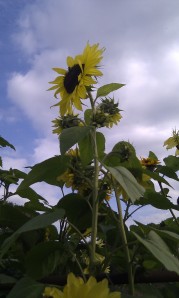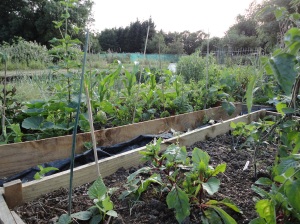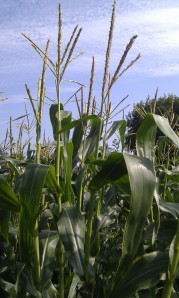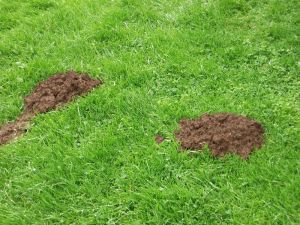Many allotments are under attack from councils and developers wanting to build houses, shops offices and generally concrete over the area. Why is this a bad idea?
There are historical, ecological, community and health reasons why we should be finding more land for allotments and community gardens not trying to squeeze them out of existence.
What is an allotment? Allotments are generally understood to be individual plots cultivated for private use, grouped together on a larger parcel of land. A Community Garden is generally a parcel of land which is cultivated by a group together as a whole plot. Most allotments forbid any permanent structures, for example sheds cannot have a concrete base or be larger than a specified size. There are some differences in the terms used internationally, but we’ll use the above.
Allotments are found in many countries; for example, UK, USA, Sweden, Denmark, Germany, Netherlands, Philippines and Malta. These latter two are twenty-first century start-ups. Malta’s aim is to encourage more young people to take up organic farming. In the Philippines the allotments offer a means of growing their own food to poor urban families. The countries with long established allotments often started offering such land as a result of the increasing urbanisation of the population which left them without gardens in which to grow their food. The land itself was donated by private philanthropists and landowners or by local councils, on a leasehold rather than freehold basis.
Historically allotments have played an important role in feeding the various nations. They’re also important in showing how society has progressed at grass roots level (sorry for the pun). When the majority of the population was rural based, there was frequently a productive garden around the home and often an acre or more to provide vegetables and keep chickens and a pig. Well, there was until enclosures of common land from the mid eighteenth century onwards. These days most of us live in towns and have small gardens or balconies and probably not enough time to tend an acre after work; but we could manage to till an allotment.
Allotments can encourage and support local communities; the majority of plot holders will live within walking or cycling distance so may know each other away from the allotments and are encouraged to get to know each other with regular social events and general conversation when working on their plots. Community gardens can be even better at generating the neighbourly feeling as leisure space as well as productive space is shared.
The health benefits of gardening and being outside are as applicable to allotments as they are to your own private garden. Exercise, fresh air, natural sunlight (vitamin D) and fresh food plus the known advantages of the soil itself, as research has shown that soil micro-organisms could help lift our mood.
Ecologically and environmentally, allotments maintain an important diverse range of plant species and varieties within a species. They are a green space within urban areas, helping to reduce mean temperatures; providing a permeable surface to diminish the effects of water run-off and flooding; and improving air quality as plants take in carbon dioxide and give out oxygen.
I think one of the delightful aspects of British allotments is that the parcel of land you are given is measured in ‘rods’. A rod is 5 ½ yards and was quite literally a rod used by surveyors to measure a plot of land; rods were joined together for measuring longer areas. The usual size of an allotment plot is 10 rods or about the size of a doubles tennis court.
The week 5- 11 August is National Allotment Week in Britain, run by the National Allotment Society. Many local allotment groups are having open days – so why not visit an allotment site near to you and see what they get up to? You could put your name down for a plot – or at the very least support allotment sites such as Farm Terrace so they don’t get built on; they are far too precious a resource as they are.
Marie Shallcross
Plews Garden Design – Resolving your Gardening issues with inspirational ideas and flexible solutions
Sitting in the garden enjoying the sun or sitting on a cool veranda in the shade?
“In Your Summer Garden with Plews Garden Design” – the newest in our series of Gardening Almanacs makes good reading wherever you are.







